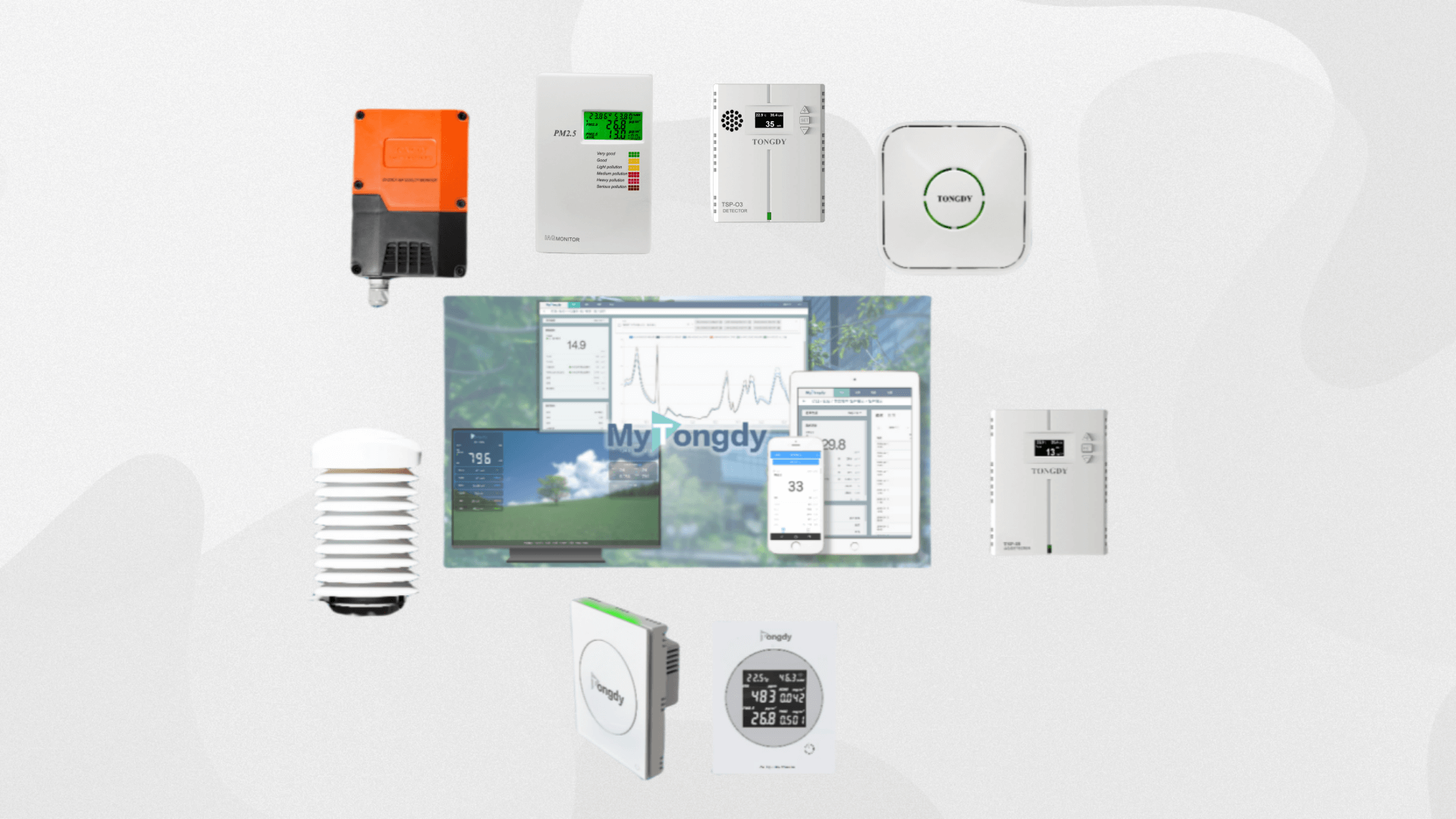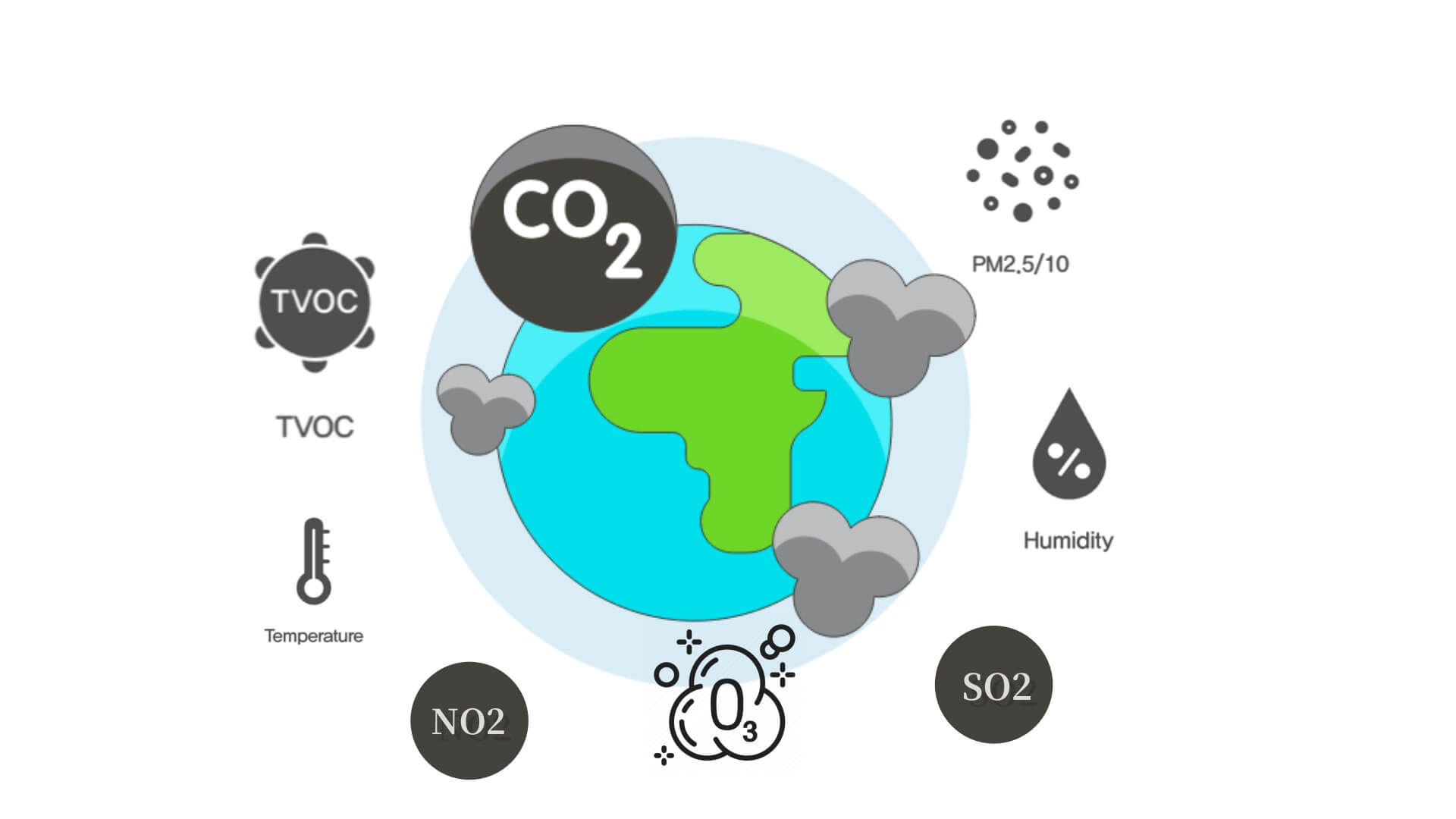Air quality sensors are curcial in monitoring our living and working environments. As urbanization and industrialization intensify air pollution, understanding the quality of the air we breathe has become increasingly important. Real-time online air quality monitors continuously provide accurate and comprehensive data year-round, benefiting public health and environmental protection.
Parameters Measured by Air Quality Sensors
Air quality sensors are devices designed to monitor and measure the concentration of pollutants in the air. They include professional monitoring stations used by government agencies, commercial-grade monitors for buildings and public spaces, which ensure the reliability and accuracy of monitoring data, and consumer-grade (home-use) devices that typically provide data for personal reference and are not suitable for managing ventilation, pollution control, or building assessments.

Key Parameters Monitored by Air Quality Sensors
1. Carbon Dioxide (CO2)
Although not traditionally viewed as a pollutant, CO2 levels are crucial for understanding whether indoor ventilation meets breathing requirements. Prolonged exposure to high CO2 concentrations can lead to brain damage and health issues.
2. Particulate Matter (PM)
This includes PM2.5 (particles with a diameter of 2.5 micrometers or less) and PM10 (particles with a diameter of 10 micrometers or less), along with smaller particles like PM1 and PM4. PM2.5 is particularly concerning because it can penetrate the lungs and even enter the bloodstream, leading to respiratory and cardiovascular problems.
3. Carbon Monoxide (CO)
CO is a colorless, odorless gas that can be lethal at high concentrations over time. It is produced by the incomplete combustion of fossil fuels. Air quality sensors measure CO levels to ensure they remain within safe limits, especially in urban areas with heavy traffic.
4. Volatile Organic Compounds (VOCs)
VOCs are a group of easily evaporated organic chemicals from sources like paints, cleaning products, and vehicle emissions. High VOC levels can cause severe health effects and contribute to ground-level ozone formation, impacting both indoor and outdoor air quality.
5. Nitrogen Dioxide (NO2)
NO2 is a key outdoor air pollutant mainly produced by vehicle emissions and industrial processes. Long-term exposure can lead to respiratory issues and exacerbate asthma, as well as cause acid rain.
6. Sulfur Dioxide (SO2)
SO2 primarily originates from industrial pollution due to fossil fuel combustion, causing respiratory problems and environmental damage like acid rain.
7. Ozone (O3)
Controlling ozone concentrations is critical, as high levels can lead to respiratory issues and retinal damage. Ozone pollution can originate both indoors and in the atmosphere.

Applications of Air Quality Sensors
Commercial Applications:
These sensors are essential in public buildings like offices, commercial spaces, airports, shopping centers, and schools, where reliable real-time monitoring of air quality data is needed for analysis, prediction, and assessment of green, healthy buildings and spaces.
Residential Applications:
Designed for individual users or households, these sensors offer simple air quality monitoring displays.
Benefits of Using Air Quality Sensors
Real-time monitoring of air quality across different areas allows for data-driven solutions, enabling targeted distribution of fresh air or air purification measures. This approach promotes energy efficiency, environmental sustainability, and better health, ultimately enhancing productivity and creating healthier living and working environments.
How to Choose the Right Air Quality Monitor
With numerous indoor air quality monitors available on the market, there is significant variation in price, performance, features, lifespan, and appearance. Selecting the right product requires a comprehensive evaluation of the intended application, data requirements, the manufacturer's expertise, monitoring range, measurement parameters, accuracy, certification standards, data systems, and after-sales support.
News - Tongdy vs Other Brands for Air Quality Monitors (iaqtongdy.com)
Post time: Oct-16-2024
